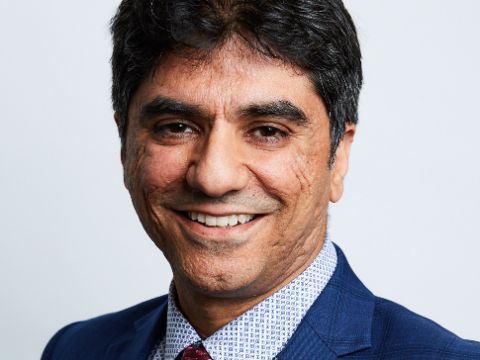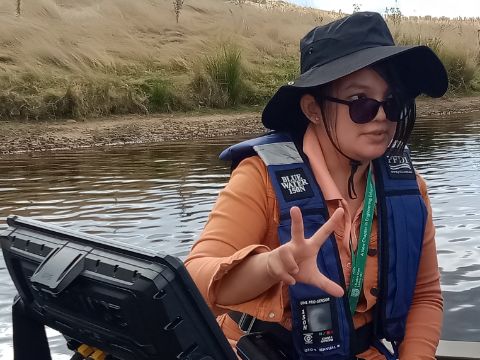This World Environment Day 2023 has a focus on plastic pollution.
The environmental projects by civil engineering students and staff in the Charles Sturt School of Computing, Mathematics and Engineering include:
Tackling plastic pollution and fostering sustainability in Pu Ngaol Village, Cambodia
An initiative involving three Charles Sturt student engineers is part of the 2023 Engineers Without Borders Challenge. It addresses the persistent plastic pollution problem in Pu Ngaol Village in Mondulkiri province, approximately 400 kilometres north-east of the capitol Phnom Penh in Cambodia.
 The student engineers – Mr Luke Dunkley, Mr Thomas Hunter, and Mr Blake Martin - have identified polyethylene terephthalate (PET), a popular thermoplastic, as the primary environmental culprit.
The student engineers – Mr Luke Dunkley, Mr Thomas Hunter, and Mr Blake Martin - have identified polyethylene terephthalate (PET), a popular thermoplastic, as the primary environmental culprit.
They are currently developing an efficient PET recycling method that involves reheating and remoulding the plastic, thus repurposing this hard-wearing pollutant.
“The project’s cornerstone is the development of the ‘Soft Plastic Reuse Press’, an uncomplicated, cost-effective, and sustainable solution to transform soft plastic waste into practical plastic sheets,” Mr Dunkley said.
“This oversized sandwich press-like device, comprising two electrically heated large plates, reshapes the softened plastic. Its sturdy design, fashioned from square steel tubing, is purposefully built to endure extreme pressures and temperatures.
“The project has the potential to spark a circular economy in the village by turning plastic waste into useful or saleable products, thereby promoting a sustainable economic model for the community.”
However, the team’s ambitions stretch beyond a mere technical solution. They aim to foster a cultural shift towards sustainable habits by incorporating an educational program into their plan.
The students’ Charles Sturt Engineering project supervisor, Lecturer in Civil Engineering Dr Khaled Altarawneh, said this comprehensive approach not only addresses the immediate plastic pollution issue but also equips the community to sustain these crucial endeavours.
“Ultimately, this project underscores the transformative impact of inventive and sustainable engineering centred on human needs,” Dr Altarawneh said.
Upcycling mine tailings in cement and concrete production
 The cement industry is responsible for approximately eight per cent of carbon dioxide emissions globally, and the Australian cement industry has committed to the government to reduce its carbon footprint.
The cement industry is responsible for approximately eight per cent of carbon dioxide emissions globally, and the Australian cement industry has committed to the government to reduce its carbon footprint.
Researcher and Lecturer in Engineering Dr Nariman Saeed (pictured above) said mine tailings contain high percentages of SiO2, Al2O3 and Fe2O3 components, which make these waste materials a valuable replacement for cement.
“Considering national consumption of more than 20 million cubic metres of premixed concrete per year, successful utilisation of mine tailings will have a large impact on helping to save the environment,” Dr Nariman said.
“In collaboration with a local gold-copper mine and three national coal mines, this project is aiming at conservation of finite natural resources extensively used in the cement production, to reduce the carbon footprint of cement production and reduce environmental impacts related to mining wastes.”
Mitigate thermal pollution at the Oberon Dam
Thermal stratification, or layering, is a common occurrence in deep reservoirs, where the temperature of the water varies at different depths due to the usage of water for activities such as power generation, drinking water supply, and farming.
 “The impact of thermal stratification on water quality is not always clear, and changes in water flow can affect the downstream water temperature,” PhD candidate Ms Khin Thant (pictured, left) said.
“The impact of thermal stratification on water quality is not always clear, and changes in water flow can affect the downstream water temperature,” PhD candidate Ms Khin Thant (pictured, left) said.
“This project aims to investigate the impact of thermal stratification on water quality, with a focus on the Oberon Reservoir.
“To achieve this, an accurate computational fluid dynamic model has been developed to explain the hydrodynamic and water quality characteristics of the reservoir.”
The project uses a 3D hydro-thermal-tracer model to predict the efficiency of different artificial destratification strategies that could be implemented in the reservoir.
Ms Thant’s PhD supervisor Dr Lalantha Senevirathna said to support this project, an Australia-USA collaboration has been established to procure next-generation field water quality monitoring equipment.
This research is funded by the Next Generation Water and Engineering Hub Project, and the project team works in collaboration with the Charles Sturt The Gulbali Institute of Agriculture, Water and Environment and WaterNSW.






Social
Explore the world of social